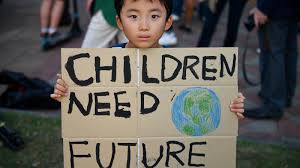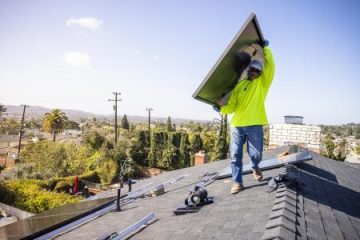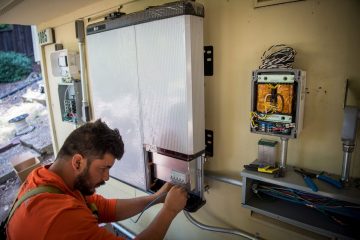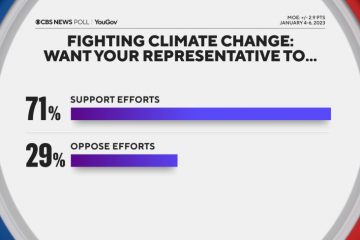Climate Change
After Inflation Reduction Act: 5 Ways to Hit the US Emissions Goal
The Inflation Reduction Act will help the US cut emissions to approximately 40% below 2005 levels by 2030, putting the national target of a 50-52% reduction in reach. Here’s how the country can get all the way there.
After Inflation Reduction Act: 5 Ways to Hit the US Emissions Goal
Author: Dan Lashof
URL: https://www.wri.org/insights/inflation-reduction-act-emissions-gap
As millions of Americans suffered through [record heatwaves](https://www.usatoday.com/story/news/nation/2022/07/10/high-temperatures-heat-dome-break-records/10023708002/) and [devastating floods](https://www.theguardian.com/us-news/2022/aug/11/america-summer-floods-rainfall-climate-crisis) this summer, Congress finally responded to the climate crisis with a major investment in solutions. The Inflation Reduction Act is the most significant federal climate legislation ever enacted in the United States, providing $370 billion over 10 years to support clean electricity, electric vehicles, heat pumps and more.
Analysis from multiple groups ([here](https://repeatproject.org/), [here](https://energyinnovation.org/resources/our-publications/) and [here](https://rhg.com/research/inflation-reduction-act/)) shows that this legislation could help the country cut emissions to approximately 40% below 2005 levels by 2030. That’s huge progress towards the U.S. goal of slashing emissions [50-52% by 2030](https://www.wri.org/insights/6-words-biden-us-target-ghg-emissions-reduction).
Here are five actions the U.S. federal government, states, cities and the private sector can take to help close the post-Inflation Reduction Act emissions gap:
1) Deploy Clean Vehicles.
Cars and trucks are the largest source of greenhouse gases in the United States. The U.S. Environmental Protection Agency (EPA) has clear authority to set standards that can not only reduce these emissions, but also save consumers money in fuel costs.
Implementation of the [National Electric Vehicle Infrastructure](https://www.fhwa.dot.gov/bipartisan-infrastructure-law/nevi_formula_program.cfm) program can help support states’ EV transition. The Bipartisan Infrastructure Law provides $5 billion for states to build a [fast-charging network](https://www.wri.org/insights/funding-us-ev-charging-infrastructure), with stations located every 50 miles along major highway corridors. States can help the U.S. achieve greater emissions reductions by making full use of this program and adopting standards to require that all passenger vehicle sales be zero-emissions by 2035.
2) Generate Clean Power.
Power plants were the largest source of greenhouse gas emissions in the United States until 2016, when coal plant retirements and increases in wind and solar generation reduced emissions below those of the transport sector. The Inflation Reduction Act will greatly accelerate these trends, leading to as much as an 80% reduction in power sector emissions in 2030 compared with 2005 levels.
States can go further by setting 100% clean electricity standards, as 20 states have already done. And cities and private companies can contract to purchase 100% clean power on a 24/7/365 basis, which will make progress toward a fully clean electricity system.
3) Connect Consumers to Clean Power.
The Federal Energy Regulatory Commission (FERC) is an independent agency that has traditionally worked on a bipartisan basis to ensure that electricity markets and infrastructure enable all resources to compete. As part of its legal duty, FERC must remove barriers to newer, emissions-free technologies, allowing them to access the markets and transmission networks on an equal basis as traditional power plants.
4) Expand State and Local Climate Action.
States and cities can work in partnership with the federal government to implement an all-in climate strategy that reduces emissions well beyond what the federal government can achieve alone.
State and local actors will play an essential role in helping the nation as a whole reach its 2030 climate goal because they [control several policy levers](https://www.wri.org/research/new-climate-federalism-defining-federal-state-and-local-roles-us-policy-framework-achieve) to reduce emissions. State public utility commissions, for instance, regulate investor-owned utilities and can [play a pivotal role](https://rmi.org/the-untapped-potential-of-public-utility-commissions/) in enabling a zero-carbon grid. State and local governments can [focus their transportation investments](https://www.wri.org/insights/clean-transportation-us-bipartisan-infrastructure-law) on repairing existing roads rather than expanding them in ways that increase driving. They can also improve public transit and adopt land use planning, permitting and housing policies that reduce the need to drive.
5) Redirect Private Investment to Climate Action
The Inflation Reduction Act will provide strong incentives for the private sector to invest in emissions-reducing technologies — from battery manufacturing to systems that capture carbon dioxide directly from the atmosphere — but how aggressively companies respond to those incentives will have a big impact on how quickly emissions are reduced. Most of the incentives in the Inflation Reduction Act are through the tax code and their total value is not capped. This means that if companies and individuals respond to these incentives more than the Congressional Budget Office assumed, the total value of the clean energy investments from the Inflation Reduction Act could exceed $370 billion and further reduce emissions.
Using Every Available Means to Reduce US Emissions
These additional actions by the federal government, states, cities and the private sector will be critical to achieving the U.S. 50-52% emissions-reduction target.
The United States must use every available tool to tackle climate change or it will fall behind other countries taking advantage of the new climate economy. Fully executing the Inflation Reduction Act —and going beyond it — can help create a future that is prosperous, equitable and secure.
Climate Change
Federal Grant For Electric School Buses
The Federal Infrastructure Law has allocated $5 billion to convert diesel school buses to run on batteries and alternative fuels.
School districts must apply for this money before the grant deadline on Aug. 22. Many mayors and other officials don’t know the opportunity exists. “Climate Changemakers” put together a packet for anyone who wants to prompt their school district and city to get on board. Please use it, or share with those who might!
https://www.https://www.climatechangemakers.org/wapo-school-buses?utm_source=newsletter&utm_medium=email&utm_campaign=wp_climatecoach&wpisrc=nl_climatecoach
Climate Change
US States Can Finally Start Applying for IRA Incentive Money
Author: Todd Woody
URL: https://www.bloomberg.com/news/articles/2023-07-27/us-states-can-start-applying-for-ira-incentive-money?leadSource=uverify%20wall#xj4y7vzkg
Almost a year after US President Joe Biden signed the [Inflation Reduction Act into law](https://www.bloomberg.com/news/articles/2022-07-28/here-s-how-manchin-s-climate-deal-could-make-energy-bills-cheaper?sref=aiiNijqZ&srnd=green), American consumers are one step closer to receiving the generous rebates it includes for heat pumps and other high-efficiency electrical appliances. On Thursday, the federal government began accepting applications from states to administer more than $8.5 billion in IRA funding tied to those expenditures.
To hone states’ applications, the Department of Energy (DOE) is providing them with guidance for designing programs to distribute funding to their residents. Once the DOE approves a program from a state or US territory, it will allocate a [lump sum to fund those rebates](https://www.energy.gov/scep/articles/ira-home-energy-rebates-state-allocations); that funding ranges from $50 million for American Samoa to $690 million for Texas. Nationwide, the incentive pot includes $4.3 billion for replacing fossil fuel furnaces and other appliances with electric devices, and another $4.3 billion to pay for insulation and other home efficiency upgrades.
“This is a big, big deal,” Deputy Secretary of Energy David Turk told reporters on Thursday. “We expect these rebates will start to be available to consumers in some states as early as the end of this year and continuing on a rolling basis in 2024, depending on how quickly states and territories can do what they need to do from their end.”
For consumers, the IRA’s provisions could be the difference between a home upgrade that’s affordable and one that’s out of reach. The incentives include an $8,000 rebate for [heat pumps that can warm and cool homes](https://www.bloomberg.com/news/articles/2022-12-27/five-questions-to-ask-before-you-buy-a-heat-pump), an amount that could cover roughly half the installation costs of some systems. There’s also a $1,750 rebate for [heat pump water heaters](https://www.bloomberg.com/news/articles/2023-01-23/heat-pump-water-heater-installation-four-pitfalls-to-avoid?srnd=green-greener-living), $840 cash back for [induction stoves](https://www.bloomberg.com/news/articles/2023-01-17/worried-about-a-gas-stove-ban-here-are-alternatives?sref=aiiNijqZ) and heat pump clothes dryers and $4,000 for [electrical system upgrades](https://www.bloomberg.com/news/articles/2022-08-17/how-to-lower-the-cost-of-a-home-electrical-upgrade).
Households are eligible for up to $14,000 in rebates if they [earn less than 150% of their area’s median household income](https://ami-lookup-tool.fanniemae.com/amilookuptool/). If not, families can still claim a $2,000 tax credit for heat pumps and other appliances. DOE said it aims to review state programs and fund applications in 60 to 90 days after submission.
How fast the rebates become available to consumers depends on state energy offices’ ability to design effective programs, says Alisa Petersen, federal policy manager for the US program at [RMI](https://rmi.org/), a nonprofit that promotes decarbonization. States have until Jan. 31, 2025 to submit funding applications or their money will be redistributed to other states.
The IRA requires, for example, that rebates be deducted from the price of an appliance at the time of purchase. “We want to make sure that these rebates can be available at the point of sale so that individuals aren’t required to provide upfront expenses,” said Michael Forrester, assistant director of partnerships at the energy department Office of State and Community Energy Programs. “Because when we’re dealing with low-to-moderate income individuals, oftentimes they can’t front that cash.”
That mandate, however, complicates the design of state programs. A system must be put in place for a contractor, a state energy office or another entity to verify that a buyer’s income qualifies for the incentives. Forrester told reporters that DOE will help states develop verification schemes and noted that if a household is already eligible for government programs based on income, they’ll automatically qualify for the rebates.
Climate Change
Climate action is on the cusp of exponential growth
In 1992, the first text message was sent. After a slow start, text-based services exploded. Today, over 23 billion messages are sent every single day. This paved the way for the smartphone revolution that we have seen today. And other technology trends have followed that same curve.
I know how much we struggle to comprehend and predict what “exponential change” means. Because I was at Nokia in 1993 when that technological revolution started. And now as head of UN Climate Change, I’m here to tell you that what was true for mobile phones back in 1992, and other revolutionary shifts, is also true for climate action today.
To make climate action go from linear to exponential pace, it’s not just my job to make it happen. It’s also your job, too. We all know that climate impacts are hitting harder and harder every day. The ambition we need to see, reducing emissions, adapting to impacts and providing the means to address the crisis, are severely lacking. But just like technology, public opinion has its tipping point.
In my youth, I campaigned against apartheid. Participating in that fight, those demonstrations, meant shaking the foundations of a system many thought would never change. But then, one day, after generations of slow progress, the system changed. The pressure was too great. The point tipped.
We’re here in Detroit, the heart of car manufacturing. Take a look at this graph. Electric vehicle sales are expected to increase to become 70 percent by 2030. Another example. Solar energy. Between 2010 and 2020, we moved from 20 gigawatts of solar energy installed to 150 gigawatts. Now, just three years later, that number is expected to increase to 350 gigawatts per year. And by 2030, that number is expected to increase again to 1,000 gigawatts per year.
Change can come fast. But time isn’t on our side. We have less than seven years between now and 2030 to halve our global emissions. So the question is: Will those tipping points come soon enough to avoid the catastrophic impacts of climate change?
At out current speed, change will come too late to limit warming to 1.5 degrees Celsius. That is the hard truth of the global stocktake that will be completed by the UNFCCC this year.
But this is where you come in. You may think it’s not your responsibility to drive change. You may not think you have the power to make this happen. Both of those statements are wrong.
At the UNFCCC, we are the custodians of the process. We’re the defenders of the agreements. We are the champions of parties and the agreements that they make. But globally, we’re collectively in a state of what the author Kim Stanley Robinson describes as “The Dithering.” A state of indecision and a state of inaction in the face of a global crisis. But countries will agree to boost in action. If enough people encourage them to do so. Contact your representatives and ask them what they are doing to deliver. What plans do they have to ensure that your concerns on climate count? That direct action does work.
I have seen positions change time and time again when citizens engage directly. Every time you buy something, ask yourself the question: Is this the greenest option? Ask those around you about their green choices. Learn new things. Educate and mobilize. The power of human organization can result in change.
Which brings me to my final point. You don’t have to be a politician or a prominent business person to make a significant contribution. Climate action calls for all skill sets. Ask yourself: What am I passionate about? What am I good at? What am I training for? Then ask yourself the question, how can I apply this to the climate crisis? And do exactly that thing.
If you act, the exponential change that is needed will happen. I thank you.
Climate Change
Why Individual Action on the Climate Crisis Matters
By Peter Knapp
The rise of a particular trend, often echoed even by environmental commentators, suggests that individual efforts to combat climate change are both difficult and inconsequential. According to this narrative, individual actions are insignificant in the face of the enormous challenges posed by climate change, and it is only the responsibility of governments and large corporations to implement meaningful change. While this perspective is understandable, given the perceived lack of response from governments and major polluters, the author of the original text argues passionately for the importance of individual action in conjunction with systemic change.
1. Not everyone consumes the same amount; high consumers have a disproportionate impact on carbon emissions compared to low consumers.
The author begins by dismantling the assumptions that underlie the “why bother when I’m one of 8 billion” argument. Contrary to this belief, not everyone consumes the same amount of resources. In reality, the richest 10% of people are responsible for half of the world’s carbon emissions, while the poorest half contributes just 10%. This staggering disparity in consumption patterns means that high consumers, typically found in developed countries, have an outsized impact on the climate crisis compared to the majority of the global population.
2. One less flight or cutting down on flying can have a significant impact on carbon emissions, especially since a small percentage of the population is responsible for a large part of aviation emissions.
The “one less flight won’t help anyone” argument is also challenged. While air travel is often portrayed as responsible for only a small fraction of carbon emissions, the reality is more complex. When considering the total warming potential of aviation, including the impact of contrails, flying accounts for approximately 6-7% of total warming potential. Moreover, flying remains the most unequal form of transport, with only 1% of the world’s population causing 50% of commercial aviation emissions. By questioning the idea that individual choices do not matter, the author emphasizes the significance of cutting out flying as a meaningful action within one’s control.
3. Transitioning to electric vehicles alone is not a sufficient solution; it’s better to explore alternatives like public transport and cycling, which can lead to less demand for car infrastructure.
Regarding the focus on transitioning to electric vehicles (EVs) as a technological solution, the author cautions against relying solely on this approach. EVs still contribute to pollution, including particulate pollution through tires, brakes, and resuspension. Additionally, the production of EVs requires vast quantities of materials, often mined in countries with troubling labor practices and pollution. Moreover, hydrogen, another touted technology, has its own challenges and implications. The author suggests that individual actions like choosing alternatives to driving, improving public transport, or advocating for systemic changes are more impactful than relying solely on EVs.
4. Reducing meat consumption is crucial, as the average meat consumption varies widely among countries and individuals, and the meat industry has numerous harmful effects.
The author also addresses the argument that individual choices concerning meat consumption have little significance given the vast global population. By homogenizing all diets as if everyone eats the same as the average American, this viewpoint ignores the significant variations in meat consumption among different countries and individuals. The meat industry is linked to numerous environmental issues, including land use, water use, antibiotic resistance, animal cruelty, and deforestation. By recognizing how much individuals consume compared to others and understanding that every reduction in meat consumption matters, the author encourages a shift towards more sustainable diets.
5. Individual actions can inspire societal change, especially when influential individuals or celebrities lead by example. While individual actions alone may not solve the climate crisis, they can contribute to systemic change.
The central message throughout the text is that the belief that “one person is too small to make a difference” is a defeatist viewpoint that hinders progress. Individual actions can be catalysts for societal change and can inspire collective efforts to address the climate crisis. Governments are more likely to take action when they see public demand for change. Thus, individual actions to reduce consumption, advocate for better policies, and challenge corporations can have far-reaching effects.
The author acknowledges that systemic change is essential to address climate change effectively. However, individual actions play a crucial role in initiating and influencing that systemic change. By providing examples of influential individuals and celebrities who have made a difference through their individual actions, the author demonstrates how high consumers can serve as powerful drivers for societal change.
In conclusion, while individual actions alone may not be enough to solve the complex challenges of climate change, they are far from pointless. The author contends that systemic change begins with individual actions and that individuals can have significant impacts by altering their consumption patterns, advocating for change, and inspiring others to join the collective effort to address the climate crisis. It is not about placing the burden solely on individuals but recognizing that their actions, in conjunction with systemic change, can lead to a more sustainable future.
Climate Change
She’s on a Mission From God: Suing Big Oil for Climate Damages
By David Gelles Erin Schaff
New York Times
The article discusses attorney Lee Sims’ groundbreaking lawsuit against major fossil fuel companies on behalf of 16 Puerto Rican municipalities affected by climate change-related damages. Sims argues that these companies, including Exxon Mobil, Chevron, Shell, and BP, intentionally deceived the public about the consequences of their actions while being responsible for 40% of global greenhouse gas emissions since 1965. Her case stands out for two reasons: it is the first to apply the Racketeer Influenced and Corrupt Organizations Act (RICO) to the fossil fuel industry, potentially resulting in significant financial damages, and it seeks damages specifically for a weather event, Hurricane Maria in 2017. The article highlights the significance of the case and the industry’s concern about the potential financial implications if they are found liable for the damages they caused. Sims’ lawsuit is part of a broader wave of litigation targeting fossil fuel companies for their role in climate change.
Climate Change
What if climate change meant not doom — but abundance?
By Rebecca Solnit
March 15, 2023 at 6:00 a.m. EDT
Rebecca Solnit, a writer and historian, is the author of more than 20 books and co-editor of the anthology “Not Too Late: Changing the Climate Story From Despair to Possibility,” [__publishing in April_](https://www.nottoolateclimate.com/)_._
In this text, Rebecca Solnit explores a different perspective on the climate crisis and how we should respond to it. She challenges the assumption that addressing climate change means sacrificing abundance for austerity and giving up our conveniences. Instead, Solnit suggests that we should give up things that make us miserable and focus on relinquishing harmful aspects such as deadly emissions and feelings of doom and complicity. She proposes that our current way of living is already austere in many ways, as we are experiencing a decline in confidence, security, social connectedness, and overall well-being. Fossil fuel burning contributes to this impoverishment by corroding politics, causing health issues, and increasing despair and anxiety through destabilized temperature and weather patterns.
Solnit acknowledges the impact of the climate crisis on the younger generation, who rightfully experience anger and grief. However, she emphasizes that a broader sense of helplessness and guilt affects many of us, leading to moral injury. Some people try to avoid confronting this reality by adopting willful obliviousness or numbing behaviors, which result in inaction. Solnit argues that this crisis requires specific action, including a swift transition to renewable energy, improved designs for the built environment, and better care for the natural world.
Despite the challenges, Solnit finds hope in the growing awareness that humans are interconnected with nature and dependent on it. She sees individuals and communities reevaluating their work and lifestyles, considering the sustainability of the environment. Farmers, Indigenous communities, ocean advocates, and others champion the well-being of the biosphere and work towards a better future. Solnit believes that this knowledge and action need to be cultivated and expanded until they become the foundation of how we understand and operate in the world.
To achieve such a transformation, Solnit suggests a change in perspective. Rather than defining wealth by money or material possessions, she proposes redefining it as joy, beauty, friendship, community, and a close connection to nature and sustainable food production. Wealth should encompass security in our environments, societies, and confidence in a viable future. Solnit urges us to reclaim our time and prioritize pursuits that bring true richness to our lives. By focusing less on getting and spending, we can engage in creative endeavors, adventure, learning, building stronger societies, and caring for loved ones, including ourselves. Through her research on how people respond to disasters, Solnit discovered that even amidst death and ruin, joy can emerge when people find meaning, deep connections, and generosity.
In response to the climate crisis, Solnit calls for us to tap into the resilience and spirit that people demonstrate in times of disaster. By embracing a sense of meaning, connection, generosity, and joy, we can meet the immense challenges and make lives better. She believes that this moral beauty already resides within us and is the abundance we need to navigate the climate crisis successfully.
Climate Change
CBS News poll analysis: Amid concern about extreme weather events, most want Congress to fight climate change

Author: CBS News
URL: https://www.cbsnews.com/news/extreme-weather-opinion-poll-2023-1-10/
As Americans look ahead, more than half are pessimistic about the prospect of extreme weather events and climate, particularly those who report having faced more extreme weather in their local area in recent years. They say this experience with extreme weather has led them to be more concerned about climate change.
And climate is an issue most Americans want to see addressed by political leaders: a big majority want their representative in Congress to *support* efforts to fight climate change, rather than *oppose* such efforts.
Some see climate change as a more urgent issue than others. Younger Americans, in particular, place a lot of importance on tackling climate change — it’s among the top priorities they want this Congress to focus on. The percentage of those ages 18-29 who say it should be a “high” priority is the highest of any other age group.







